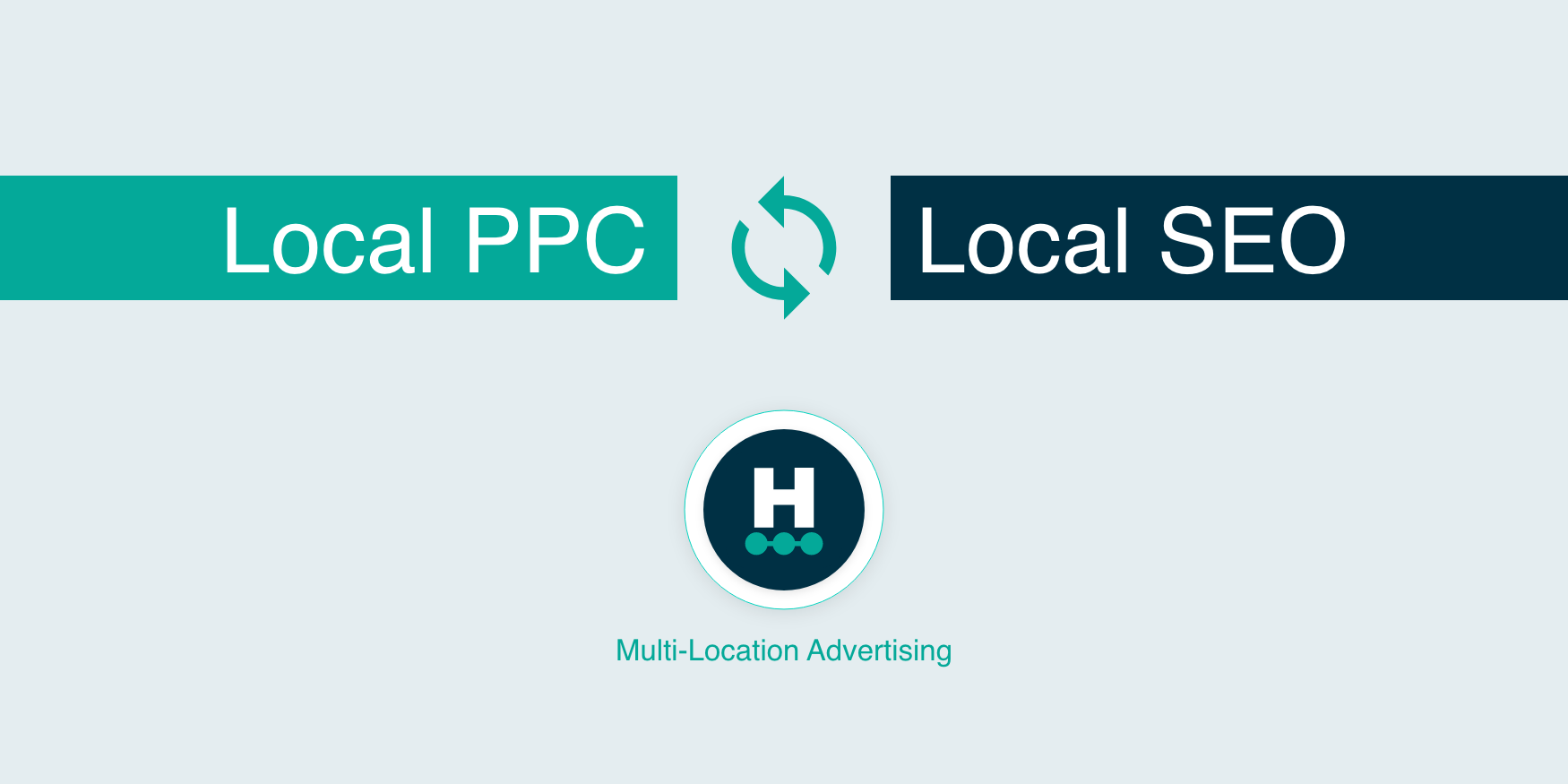5 Benefits to Local Optimization of Market-Wide Campaigns
You've heard it. We've heard it. Franchisees are always asking what levers they can pull to improve...


In today’s competitive and noisy landscape, the importance of search engine marketing - both PPC and SEO - at the location-specific level cannot be overstated for franchise brands. These digital strategies ensure that franchises not only capture local consumer consideration, but convert that consideration into measurable business results.
This comprehensive guide details the integral role of local PPC and SEO (separate and in tandem), how they can enhance other marketing efforts, and calls out the latest trends. We provide actionable strategies to boost Return on Advertising Spend (ROAS) for the brand system and each of its franchisees, and call attention to considerations that must be made when local search is running concurrently with national paid search campaigns.
Effectively orchestrating local PPC and SEO is pivotal in ensuring that an individual franchise location dominates the search engine results pages (SERPs) in their local market, Doing so helps ensure your desired consumer action - an online purchase, a free quote, find a location, make a booking or reservation, get directions, download an app, subscribe to news, leave a review - is as frictionless and fast as possible.
Why is local orchestration of PPC and SEO so critical in maximizing these outcomes per location and systemwide? Because consumers are increasingly relying on search to guide purchases, navigation, and more.
The stakes are high, and national campaigns can reduce the effectiveness of local performance when PPC and SEO are not synchronized. For example, well-optimized local SEO increases traffic to a local web page or Google Business Profile listing. This history can yield higher quality scores of Google Ads, leading to lower ad costs. When campaigns are deployed systemwide via a single budget, locations with lower quality scores negatively impact the overall ad cost and ultimately performance - the number of desired consumer actions listed above goes down unnecessarily.
Additionally, nationally-budgeted PPC campaigns can be difficult to address regional nuances like product preferences and demographic differences - this can dilute the effectiveness of location-specific efforts deployed by individual franchisees - leading to a mismatch between local consumer needs and advertised content. Tailoring your search strategies to enhance local visibility directly influences consumer behavior, driving both online engagements and in-store visits.
When Paid Search is singularly budgeted and deployed at a systemwide level, other pay-per-click ad formats like display or video are likely budgeted and deployed similarly, so that all related media can be optimized together to yield the lowest systemwide CPC or CPA. This has a compounding negative effect:
In addition to consumer disconnect, systemwide campaign optimizations can create disproportionate benefits for certain location types, like those in major metro areas. Because ad optimizations only take into consideration the audience where the most conversions occur, small market franchisees or unique locations that may have a different audience profile will receive fewer impressions and clicks, not obtaining their fair share of their national ad fund or co-op contributions.
Finally, when brands deploy keyword-based campaigns systemwide or by DMA, they are often bidding on similar keyword sets as franchisees' PPC campaigns. Close coordination is required in order to avoid unnecessarily driving up the cost of primary keywords for both the brand and its local franchisee, yielding fewer customer visits and lower ROAS.
7 Tools for Multi-Location Brands to Increase Ad Efficiency and Increase Spend
The influence of how PPC is budgeted and executed extends beyond the local level, affecting the performance of both advertising and business KPIs for the enterprise. From an advertising perspective, when national budgets are deployed in tandem with disparate local investments, it is tough sledding for brand leaders to decipher a uniform ROAS for the system (let alone tell an influential franchisee how their performance compares to the balance of the system.)
When you add in national and local investments in SEO, organic social media content, and other factors that impact the overall effectiveness of digital advertising, obtaining a clear view of holistic MROI is virtually impossible. Leveraging analytics tools to monitor system and local business KPIs such as sales trends, customer counts and sales-per-transaction can provide valuable insights, but you’re left with an incomplete view of the effectiveness of local PPC strategies, especially as compared to national efforts.
For marketing leaders at multi-location brands, having an integrated, multi-location advertising platform that can track local paid media investments, and enable national ad funds or co-op investments to be deployed on a per-location basis, provides not just location-specific and systemwide clarity to ROAS, but helps inform each location how much to spend, and where and how to spend it, in the months to come.
The landscape of Local Search is continually evolving with technological advancements and changing consumer habits. Monitoring both is vital to Local Search success.
Franchises can harness the power of local PPC and SEO by employing several key strategies:
For franchises, integrating Local Search into their marketing strategies is not just beneficial—it's critical. These efforts not only improve local visibility but also enhance the efficiency and effectiveness of broader advertising campaigns, driving significant business growth at both the local and corporate levels. Conversely, excessive investment in national paid search strategies can siphon resources away from local markets, where the real battle for customer loyalty is fought.
Ready to see the location based marketing experience on Hyperlocology?


You've heard it. We've heard it. Franchisees are always asking what levers they can pull to improve...


Yes, marketers know the importance of both paid advertising and organic strategies. However, they...